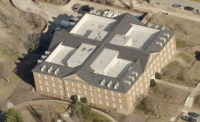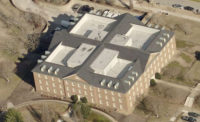A two-year police investigation into the 2019 mass shooting of 12 at a Virginia Beach, Va., municipal building was unable to identify a direct motive behind the killings, according to officials who released the final report March 24. The gunman, a former city engineer, killed 11 city public works and public utilities employees and a contractor, and injured five others.
Public utilities engineer DeWayne Craddock began his late-afternoon May 31 shooting spree in the building’s parking lot and then went inside, shooting randomly at some city employees while sparing others for no apparent reason.
One victim, public utilities account clerk Ryan Keith Cox, had guided at least seven fellow employees into a secure room and was on his way to find others when he was fatally shot, the report said.
Also killed were public works right-of-way agents LaQuita C. Brown, Alexander M. Gusev and Mary Louise Gayle; public works engineers Tara W. Gallagher and Christopher K. Rapp; and Katherine A. Nixon and 28-year city veteran Richard H. Nettleton, both public utilities engineers; Joshua O. Hardy, a public utilities engineering technician; Michelle “Missy” Langer, a public utilities administrative assistant; and Robert “Bobby” Williams, special projects coordinator for public utilities and a 41-year city employee. The local contractor killed was Herbert “Bert” Snelling, a project manager for Virginia homebuilder Eagle Construction, who was at the complex to obtain a certificate of occupancy,
The 44-minute incident concluded with the gunman's death in a gun battle with police.
According to the police report, investigators “could not identify any specific actions, statements, or documents that would have allowed a reasonable person to believe such an incident would occur.”
Craddock, a nine-year city employee, purchased six guns legally between 2006 and 2019, and held a permit for a concealed handgun. In April 2019, he also purchased body armor that he did not bring with him on the day of shooting.
The investigation did uncover several potential sources of emotional stress, such as a divorce and poor job performance evaluation in 2017. Craddock, who was Black, had also reported that an unidentified coworker had used “an extremely offensive racial slur” toward him, but his supervisor was unable to substantiate the allegation.
Anecdotal evidence from victims’ relatives suggested that Craddock’s struggles with his job and co-workers went far deeper and provide a clearer connection to his actions. His ex-wife recalled Craddock showing signs of paranoia, including a belief that others were talking about him.
On the eve of the shooting, Craddock refused to meet with a city procurement officer regarding a $3,000 contractor invoice for one project he managed even though his supervisors assured him that department leadership did not consider the problem serious, and that the situation was being addressed. In a conversation with his mother that evening, Craddock complained of insomnia and referring to problems at work with his supervisors.
Still, the police report insists that Craddock “was a very private person” who shared little information about himself or his feelings with coworkers.
On the day of the shooting, he arrived at work early, as was his custom. Craddock submitted his resignation via email, then visited several job sites with co-workers before returning to the municipal complex to gather his weapons.
“Despite exhaustive investigative work and in spite of unsubstantiated rumors and accusations,” the report adds, “it appears we may never know why he committed this heinous act.”





Post a comment to this article
Report Abusive Comment